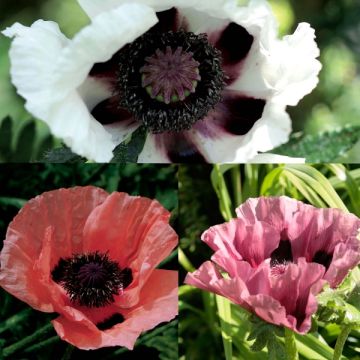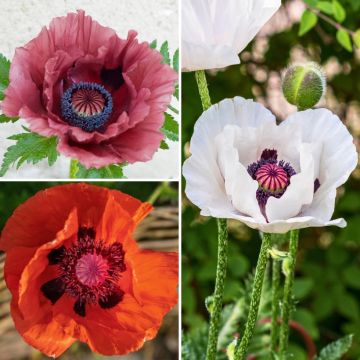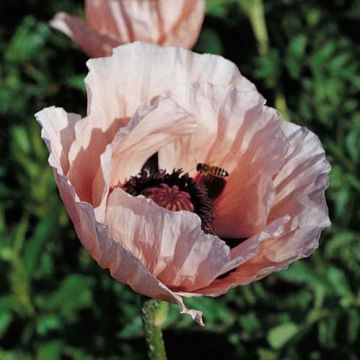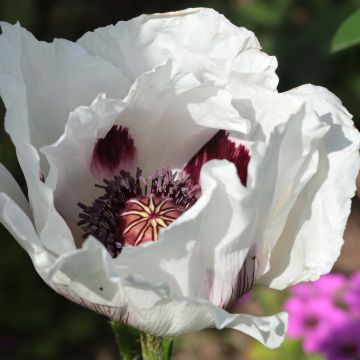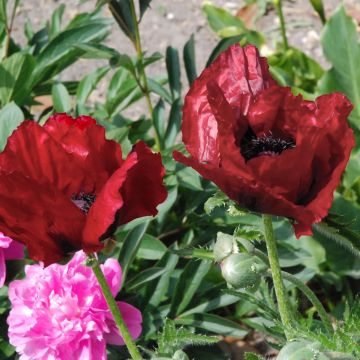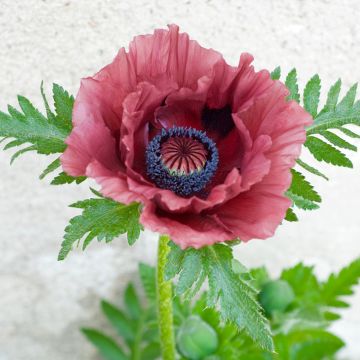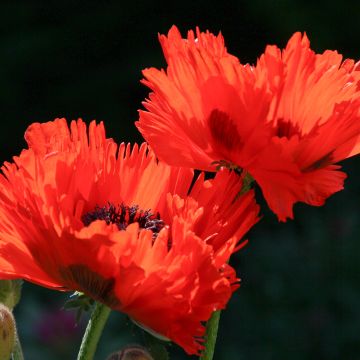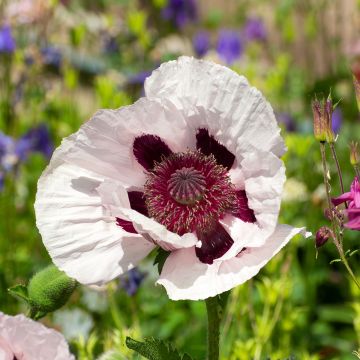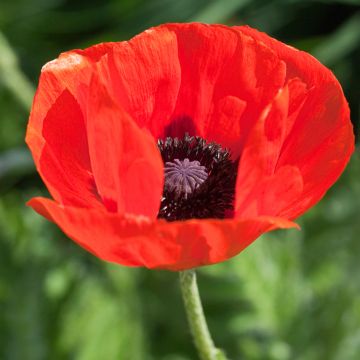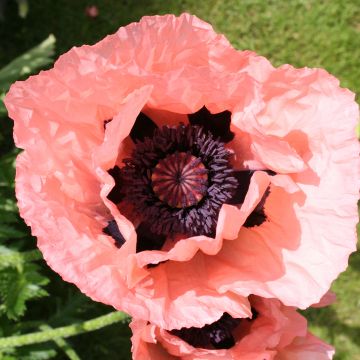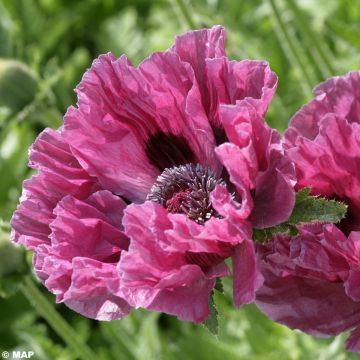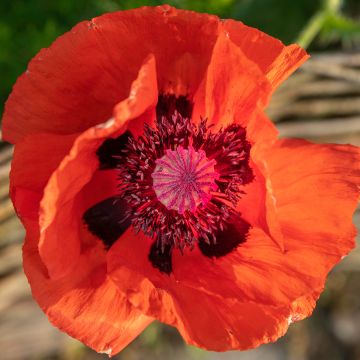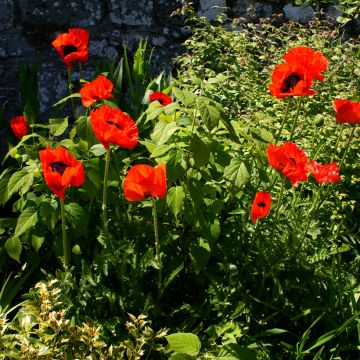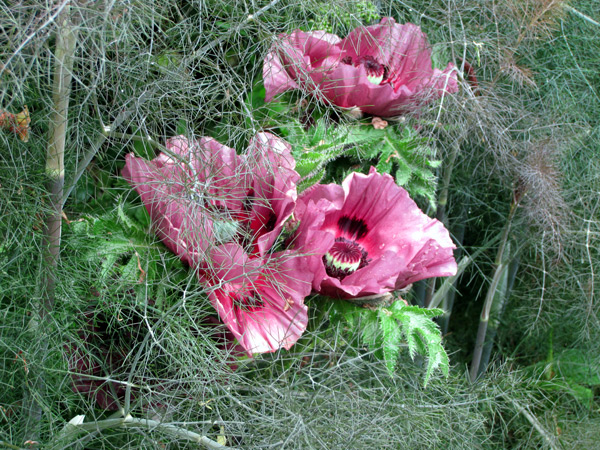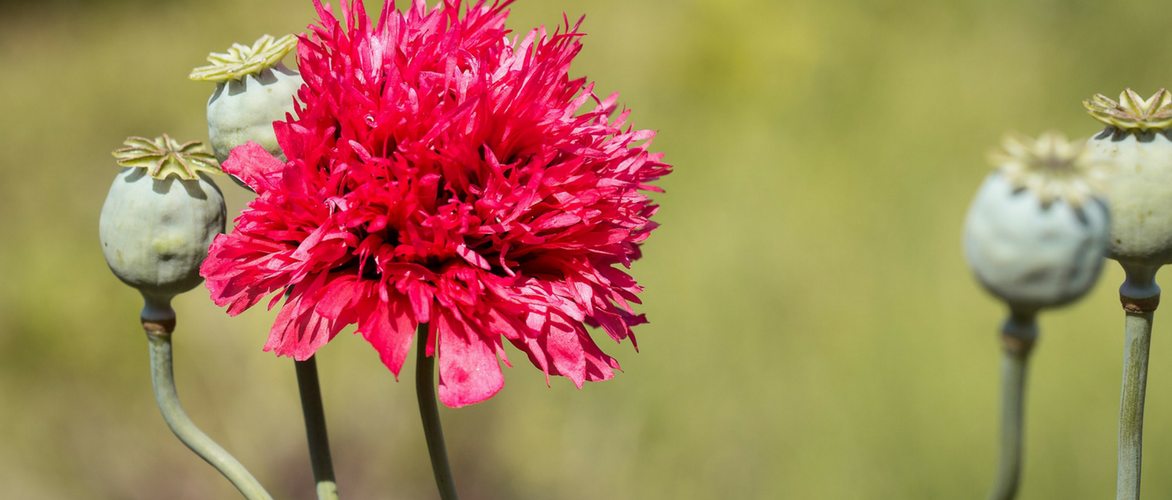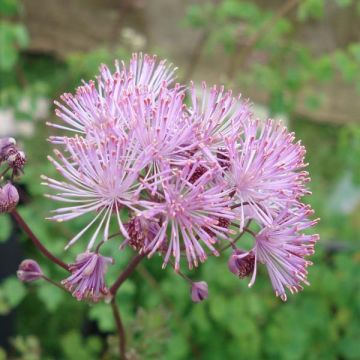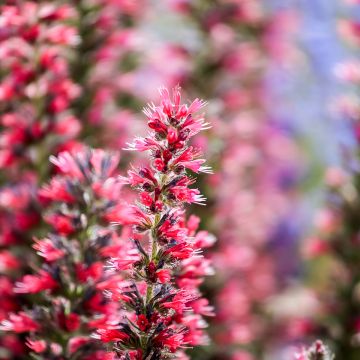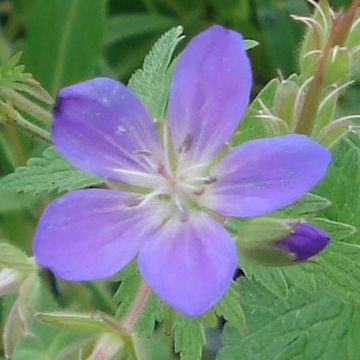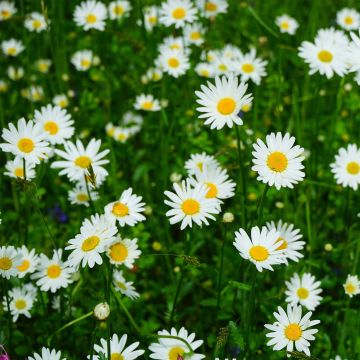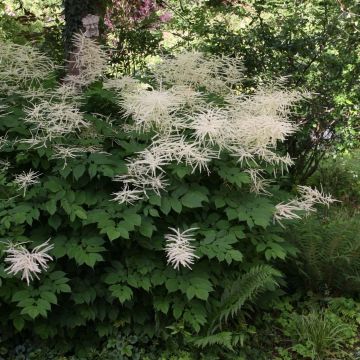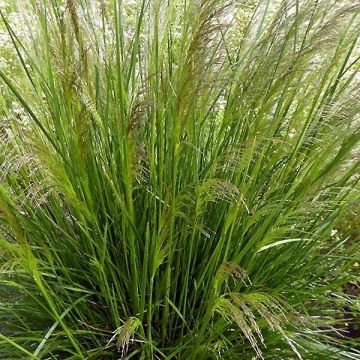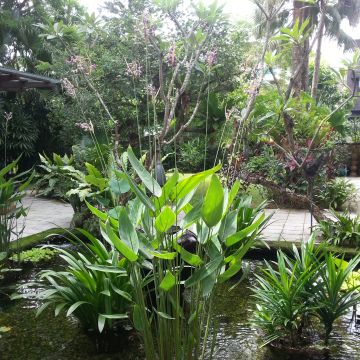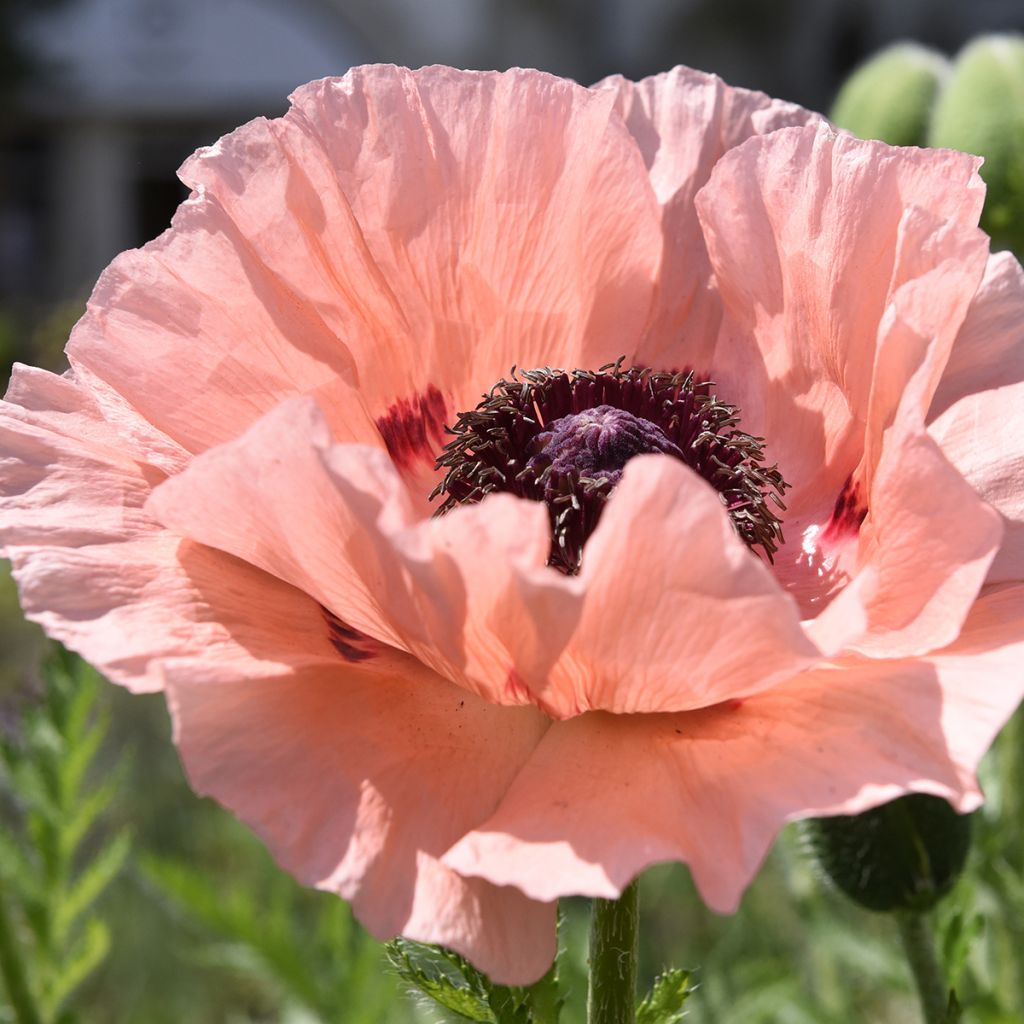

Papaver orientale Mrs Perry - Oriental Poppy
Papaver orientale Mrs Perry - Oriental Poppy
Papaver orientale Mrs Perry
Oriental Poppy
Special offer!
Receive a €20 voucher for any order over €90 (excluding delivery costs, credit notes, and plastic-free options)!
1- Add your favorite plants to your cart.
2- Once you have reached €90, confirm your order (you can even choose the delivery date!).
3- As soon as your order is shipped, you will receive an email containing your voucher code, valid for 3 months (90 days).
Your voucher is unique and can only be used once, for any order with a minimum value of €20, excluding delivery costs.
Can be combined with other current offers, non-divisible and non-refundable.
Why not try an alternative variety in stock?
View all →This plant carries a 12 months recovery warranty
More information
We guarantee the quality of our plants for a full growing cycle, and will replace at our expense any plant that fails to recover under normal climatic and planting conditions.
Does this plant fit my garden?
Set up your Plantfit profile →
Description
The Papaver orientale 'Mrs Perry' is a genuinely charming variety of Oriental Poppy, with large crumpled salmon-pink corollas that resemble silk. Dark purple macules enhance each one, revealing a pink-tinted heart filled with violet stamens. They bloom in late spring and become more abundant over the years. This very perennial plant is easy to grow in all good garden soils, even chalky and dry in summer, in the sun, and its flowers, when picked in bud, are stunning in bouquets.
The 'Mrs Perry' Poppy is a horticultural selection. This plant comes from the Papaver orientale, an herbaceous perennial of the poppy family, native to Asia. This 'Mrs Perry' variety develops robust flowering stems 60 to 70 cm tall, forming a clump of foliage thickening over the years. Flowering takes place in May-June, before the arrival of summer heat and drought. Each hairy floral stem carries a single pendant bud at its tip, which turns upwards to give rise to a large flower 13 to 15 cm in diameter, composed of crumpled petals arranged in 2 rows. The petals are salmon-pink and maculated with purple at the base. The flower remains open for a few hours before dropping its petals. Well-established plants produce several flowering stems, ensuring the renewal of flowers for about three weeks. After flowering, the foliage tends to disappear, leaving, in autumn, a small basal rosette, which is characteristic of an adaptation to high temperatures and summer drought. The foliage consists of large, crumpled, medium-green leaves covered with hairs that give them a very decorative sheen. The fleshy and deep roots of this Oriental poppy do not tolerate transplantation well, especially in mature plants.
Oriental poppies are at home in sophisticated borders like cottage gardens or wildflower meadows. Their foliage forms a luxuriant clump that stands out in borders. Associate this lovely 'Mrs Perry' variety with the tall spires of white lupins ('West Country Polar Princess') or pink lupins ('The Chatelaine'), the silvery foliage of Stachys byzantina, lavenders, daisies, and other thistles. They also beautifully complement border roses, damask poppies, and cosmos for a summer atmosphere in soft colours. When designing your border, remember that this poppy's beautiful foliage disappears during the summer.
Flowering
Foliage
Plant habit
Botanical data
Papaver
orientale
Mrs Perry
Papaveraceae
Oriental Poppy
Cultivar or hybrid
Other Oriental Poppies (Papaver orientale)
View all →Planting and care
Although preferring to grow in light and moist soil, Oriental poppies also tolerate dry and gravelly limestone and heavy and clayey, damp soil, as long as it is not waterlogged in winter. Another characteristic specific to this poppy is that its foliage disappears shortly after flowering. Still, if care is taken to cut back the faded inflorescences early, new foliage will grow in late summer, filling the gap left for the end of the season. Cut back the faded flower stalks and clean up the old foliage during the summer, but be careful! Wear gloves, as the white latex secreted by the plant is toxic and can cause severe burns if it comes into contact with the eyes!
Planting period
Intended location
Care
Planting & care advice
This item has not been reviewed yet - be the first to leave a review about it.
Similar products
Haven't found what you were looking for?
Hardiness is the lowest winter temperature a plant can endure without suffering serious damage or even dying. However, hardiness is affected by location (a sheltered area, such as a patio), protection (winter cover) and soil type (hardiness is improved by well-drained soil).

Photo Sharing Terms & Conditions
In order to encourage gardeners to interact and share their experiences, Promesse de fleurs offers various media enabling content to be uploaded onto its Site - in particular via the ‘Photo sharing’ module.
The User agrees to refrain from:
- Posting any content that is illegal, prejudicial, insulting, racist, inciteful to hatred, revisionist, contrary to public decency, that infringes on privacy or on the privacy rights of third parties, in particular the publicity rights of persons and goods, intellectual property rights, or the right to privacy.
- Submitting content on behalf of a third party;
- Impersonate the identity of a third party and/or publish any personal information about a third party;
In general, the User undertakes to refrain from any unethical behaviour.
All Content (in particular text, comments, files, images, photos, videos, creative works, etc.), which may be subject to property or intellectual property rights, image or other private rights, shall remain the property of the User, subject to the limited rights granted by the terms of the licence granted by Promesse de fleurs as stated below. Users are at liberty to publish or not to publish such Content on the Site, notably via the ‘Photo Sharing’ facility, and accept that this Content shall be made public and freely accessible, notably on the Internet.
Users further acknowledge, undertake to have ,and guarantee that they hold all necessary rights and permissions to publish such material on the Site, in particular with regard to the legislation in force pertaining to any privacy, property, intellectual property, image, or contractual rights, or rights of any other nature. By publishing such Content on the Site, Users acknowledge accepting full liability as publishers of the Content within the meaning of the law, and grant Promesse de fleurs, free of charge, an inclusive, worldwide licence for the said Content for the entire duration of its publication, including all reproduction, representation, up/downloading, displaying, performing, transmission, and storage rights.
Users also grant permission for their name to be linked to the Content and accept that this link may not always be made available.
By engaging in posting material, Users consent to their Content becoming automatically accessible on the Internet, in particular on other sites and/or blogs and/or web pages of the Promesse de fleurs site, including in particular social pages and the Promesse de fleurs catalogue.
Users may secure the removal of entrusted content free of charge by issuing a simple request via our contact form.
The flowering period indicated on our website applies to countries and regions located in USDA zone 8 (France, the United Kingdom, Ireland, the Netherlands, etc.)
It will vary according to where you live:
- In zones 9 to 10 (Italy, Spain, Greece, etc.), flowering will occur about 2 to 4 weeks earlier.
- In zones 6 to 7 (Germany, Poland, Slovenia, and lower mountainous regions), flowering will be delayed by 2 to 3 weeks.
- In zone 5 (Central Europe, Scandinavia), blooming will be delayed by 3 to 5 weeks.
In temperate climates, pruning of spring-flowering shrubs (forsythia, spireas, etc.) should be done just after flowering.
Pruning of summer-flowering shrubs (Indian Lilac, Perovskia, etc.) can be done in winter or spring.
In cold regions as well as with frost-sensitive plants, avoid pruning too early when severe frosts may still occur.
The planting period indicated on our website applies to countries and regions located in USDA zone 8 (France, United Kingdom, Ireland, Netherlands).
It will vary according to where you live:
- In Mediterranean zones (Marseille, Madrid, Milan, etc.), autumn and winter are the best planting periods.
- In continental zones (Strasbourg, Munich, Vienna, etc.), delay planting by 2 to 3 weeks in spring and bring it forward by 2 to 4 weeks in autumn.
- In mountainous regions (the Alps, Pyrenees, Carpathians, etc.), it is best to plant in late spring (May-June) or late summer (August-September).
The harvesting period indicated on our website applies to countries and regions in USDA zone 8 (France, England, Ireland, the Netherlands).
In colder areas (Scandinavia, Poland, Austria...) fruit and vegetable harvests are likely to be delayed by 3-4 weeks.
In warmer areas (Italy, Spain, Greece, etc.), harvesting will probably take place earlier, depending on weather conditions.
The sowing periods indicated on our website apply to countries and regions within USDA Zone 8 (France, UK, Ireland, Netherlands).
In colder areas (Scandinavia, Poland, Austria...), delay any outdoor sowing by 3-4 weeks, or sow under glass.
In warmer climes (Italy, Spain, Greece, etc.), bring outdoor sowing forward by a few weeks.






























